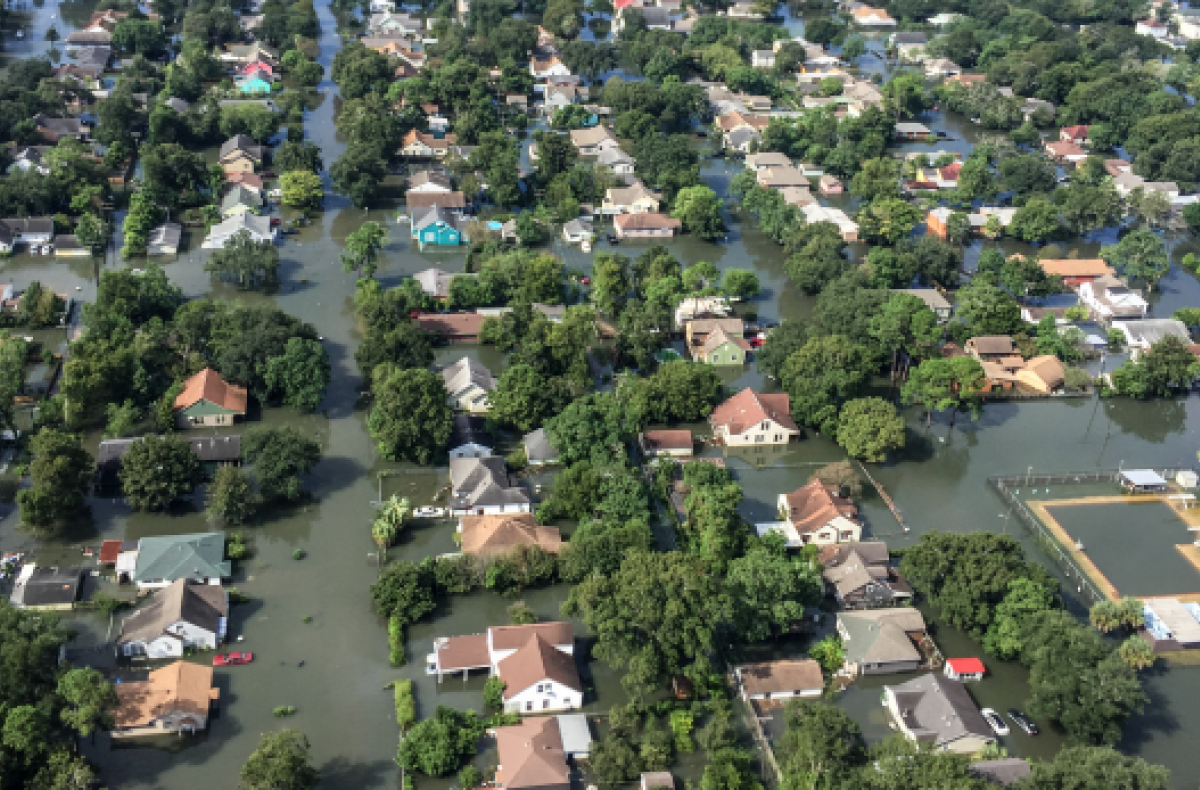Big Earth Water Hackathon challenges students to address planetary water problems
Students from various disciplines participated in the Big Earth Water Hackathon, crafting innovative projects aimed at solving a range of related issues, including some at the intersection of human health, economic development and access to safe water.
March 18, 2019

Credit: Flickr/SC National Guard
City streets flood, sewage-tainted water rises above people’s knees, parents cradle children so they aren’t swept up in the river that once was a road. Climate change-driven sea level rise and devastating storms are becoming increasingly frequent for many communities around the world. To tackle related challenges, Stanford students are combining the power of big data and Earth sciences.
At the Big Earth Water Hackathon, students from various disciplines highlighted innovative projects aimed at solving a range of related issues, including some at the intersection of human health, economic development and access to safe water.
Jenna Davis, director of Stanford’s Water, Health & Development program, served as one of the judges in the competition. “The diversity of projects was exciting,” remarked Davis. “Marine waters, freshwater, and drinking water were all represented. I was impressed with the students’ creativity and drive.”
One student project proposed using a machine learning technique to help city officials predict the impacts of sanitary sewer overflows. These data could help city officials better assess damages and public health risks, as well as respond with more effective policies. This approach could be invaluable for developing nations looking to allocate resources to maximize flood adaptation and mitigation investments, and to prevent flooding-related disease.
In regions with growing populations and those vulnerable to drought, the need for advanced treatment of recycled water is growing. Currently, detecting pathogens in recycled water requires collecting and processing a water sample, then sending it to a lab for analysis, which slows response to waterborne pathogen outbreaks. To get around this challenge, a student team at the hackathon presented an approach to integrating pathogen detection directly into the water treatment stream. The group used nanoparticles that were magnetically suspended in the wall of a microfluidic device to trap pathogens. From there, the water runs through a device that relies on inertia to separate lighter pathogens from the heavier nanoparticles used to trap them. The heavier particles sink, as the lighter pathogens spiral upwards into a capture device.
“Bringing microfluidics and lab-on-a-chip technologies into water quality monitoring is an exciting development,” Davis said. “The BioImpact team had to grapple with key challenges of detection – finding pathogens within very large volumes of water. Adding a concentration step was an important stride towards making this a working solution.”
The hackathon’s grand prize-winning team created an open-source program to predict flooding in urban areas and its economic impacts. The program is intended to aid city planners, regional bodies, businesses, insurers and investors in better understanding and quantifying climate change risks.
“This project reminded me of the effort, technology and capital that goes behind providing safe drinking water,” said hackathon participant Wenjia Cai. “We, as a global community, are facing great water challenges that demand more innovative thinking, and more rigorous developed technology.”
Contact Information
Rob Jordan
Associate Editor, Environment and Sustainability, Woods Institute
rjordan@stanford.edu


